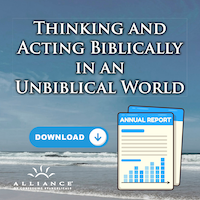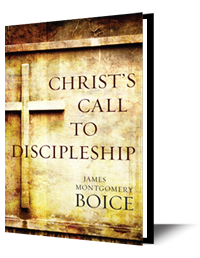Monday: A Handbook for the Priests: Leviticus 1:1-24:23
Sermon: Leviticus: An Overview
Scripture: Leviticus 1:1-24:23
In this week’s lessons, we survey the major themes and principles of Leviticus.
Theme: A Handbook for the Priests
On one occasion, the great Samuel Johnson was talking about Paradise Lost, that great classic of the English language. Johnson said he knew many people who had read it, but he didn’t know many who had read it through. I suppose that’s true of a lot of classics, and I tend to think the same thing is true of Leviticus. This is a difficult book. I once mentioned that to the Old Testament scholar Walter Kaiser, saying that I couldn’t imagine anybody making a real study of Leviticus. He replied that he had just written a commentary on it. That put me in my place.
I don’t often do surveys of books. As a matter of fact, I incline the other way. I once spent four separate weeks on the shortest verse in all the Bible, “Jesus wept” (John 11:35). Yet, I want to do a survey on Leviticus because we are studying the life of Moses. We want to see what Moses did. We want to analyze him in terms of his character and his accomplishments. So although we are doing a survey here, yet at the same time we can’t avoid studying Leviticus because it is one of the books that Moses gave us as he himself was given it by God the Holy Spirit.
Leviticus is the third of these five books of Moses, and therefore stands in the very middle of the Pentateuch. Leviticus has to do primarily with the sacrifices and offerings, and so placing it in the middle of the five books of Moses may be a way of saying that sacrifices stand at the very heart of the Old Testament religion. They also point to the very heart of Christianity, because all of the sacrifices are fulfilled and brought to completion by Jesus Christ. And His death on the cross stands at the very heart of Christianity.
Leviticus was a handbook for the priests of Israel, who were Levites; thus, “Leviticus” actually means “pertaining to the priests.” Jews call this book the Book of the Priests or the Law of the Offerings. The Hebrew name for Leviticus is vayikra, which is the opening Hebrew word: “and he called.” Hebrew books are often known by their opening Hebrew word. The “and” is left out of the NIV translation because that’s an awkward way to begin a book in English, but it’s significant in Hebrew because it ties Leviticus to the preceding book of Exodus. Exodus also begins the same way because it’s tied with Genesis which comes before. It’s a way of saying that these books of Moses are one continuous story; when we come to Leviticus we are not coming to something radically different, but we are coming to a continuation and unfolding of what we already saw in Exodus. This is part of the law that was given to Israel when they were at Mount Sinai.
Because Leviticus is a handbook for the priests on how they are to perform the offerings and sacrifices, as well as instruction on holy living, you don’t find much historical material. Of all the five books, Leviticus gives us the least narration of events. One such narration tells about the ordination and installation of the priests in their office, followed by the sin and resulting death of Aaron’s two sons, Nadab and Abihu. And the second story deals with a brief account of an Israelite who was found guilty of blasphemy.
The book of Leviticus is used frequently in the New Testament. It may be a difficult book, but the New Testament writers meditated on it because of how the sacrifices described pointed to the sacrificial death of the Lord Jesus Christ. Leviticus is also used in other ways. In Matthew 22:39, Jesus quotes Leviticus 19:18 as the second greatest commandment: “You shall love your neighbor as yourself.” Paul quotes Leviticus 18:5 in Romans 10:5 and Galatians 3:12, and he also quotes Leviticus 26:12 in 2 Corinthians 6:16. And there are other New Testament references to Leviticus, including in the book of Hebrews, which builds much of its theology on Leviticus.
The outline is fairly easy to pick out for most of the book, although scholars differ on how to divide the last eleven chapters. If you study it carefully you can see how the outline can be constructed because different sections of the book are set off by literary devices. Chapters 1-7 stand alone. Chapters 8-10 stands alone because it gives a narrative section. In chapters 8-10, Moses could very well have simply said how priests were to be installed and then described how it was carried out. But he goes on to give the story of the sin of Nadab and Abihu.
The next section, chapters 11-15, has to do with purification for uncleanness. This is probably where most of us get bogged down. The offerings we could understand because they’re fulfilled in Jesus Christ, but the details about purification rituals sound strange to us. Chapter 16 stands alone, having to do with the Day of Atonement. We are going to look at this more carefully in another study because the Day of Atonement is very important in the life of Israel, and the sacrifices that took place on this special day were fulfilled when Jesus died on Calvary.
After that, chapters 17-24 provides detailed directions for living a holy life, including repeated information about holy days and feasts, as well as material about how to care for the tabernacle. Chapter 25 talks about the Sabbath year and the Year of Jubilee, and also instructions for redeeming property and people sold into slavery. And then the last two chapters—26 and 27—list the curses for disobedience and the blessings for obedience, and also give directions for vows and tithes. This gives us a total of seven parts. We will briefly look at the first three this week, which deals with offerings, purification, and the holy life.
Chapters 1-7 talks about the sacrifices twice, but from two different perspectives—first, from the point of view of the worshipers (1:1-6:7), and then, second (with the order changed a little bit), from the point of view of the priests (6:8-7:38). It’s easy to understand the two sections. The first section that begins the book tells the worshiper how to bring the sacrifice and what he is to do with it. The second section tells the priest what he is to do with the sacrifice when he receives it.
Study Questions:
- What is significant about the Hebrew name for the book of Leviticus?
- Write down and keep handy the outline for Leviticus provided in this study.
Reflection: Look up some New Testament passages that quote or refer to Leviticus. What do you learn from how Leviticus is used?
For Further Study: Download and listen for free to Philip Ryken’s message, “The Tabernacle of God.” (Discount will be applied at checkout.)
For Further Study: James Boice’s comprehensive treatment on Moses can be used for a variety of purposes, including your personal devotional reading, small group studies, or Sunday school classes. Order your hardback copy of The Life of Moses and receive 20% off the regular price.
Think and Act Biblically from James Boice is a devotional of the Alliance of Confessing Evangelicals. It is supported only by its readers and gracious Christians like you. Please prayerfully consider supporting Think and Act Biblically and the mission of the Alliance.

















